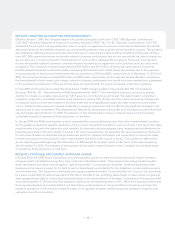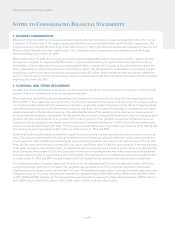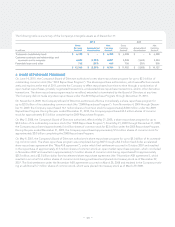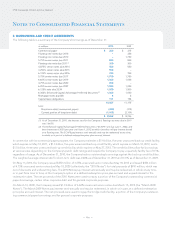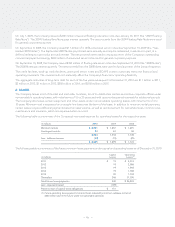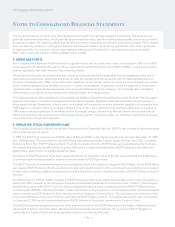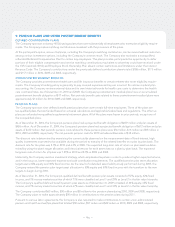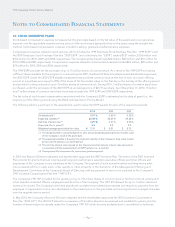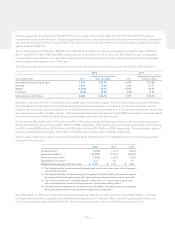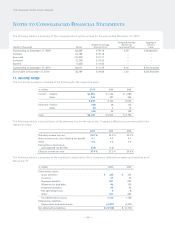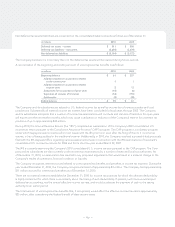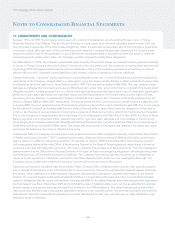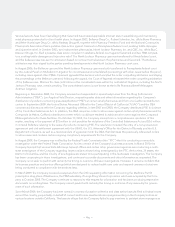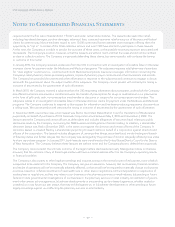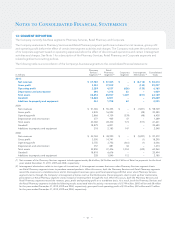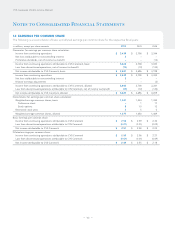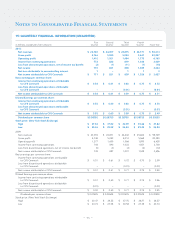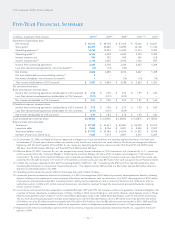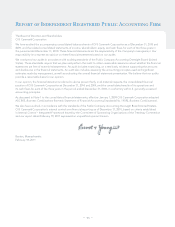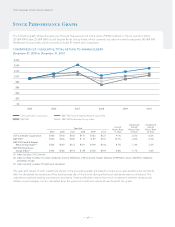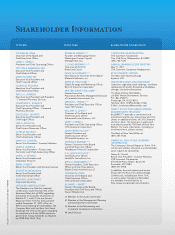CVS 2010 Annual Report Download - page 71
Download and view the complete annual report
Please find page 71 of the 2010 CVS annual report below. You can navigate through the pages in the report by either clicking on the pages listed below, or by using the keyword search tool below to find specific information within the annual report.
Net deferred tax assets (liabilities) are presented on the consolidated balance sheets as follows as of December 31:
in millions 2010 2009
Deferred tax assets – current $ 511 $ 506
Deferred tax liabilities – noncurrent (3,655) (3,678)
Net deferred tax liabilities $ (3,144) $ (3,172)
The Company believes it is more likely than not the deferred tax assets will be realized during future periods.
A reconciliation of the beginning and ending amount of unrecognized tax benefits is as follows:
in millions 2010 2009
Beginning balance $ 61 $ 257
Additions based on tax positions related
to the current year 1 1
Additions based on tax positions related
to prior years 2 12
Reductions for tax positions of prior years (10) (6)
Expiration of statutes of limitation (16) (155)
Settlements (3) (48)
Ending balance $ 35 $ 61
The Company and its subsidiaries are subject to U.S. federal income tax as well as income tax of numerous state and local
jurisdictions. Substantially all material income tax matters have been concluded for fiscal years through 2002. The Company
and its subsidiaries anticipate that a number of income tax examinations will conclude and statutes of limitation for open years
will expire over the next twelve months, which may cause a utilization or reduction of the Company’s reserve for uncertain tax
positions of up to approximately $24 million.
During 2010, the Internal Revenue Service (the “IRS”) completed an examination of the Company’s 2009 consolidated U.S.
income tax return pursuant to the Compliance Assurance Process (“CAP”) program. The CAP program is a voluntary program
under which taxpayers seek to resolve all or most issues with the IRS prior to or soon after the filing of their U.S. income tax
returns, in lieu of being audited in the traditional manner. Additionally, in 2010, the Company resolved a protest it had previously
filed with the IRS Appeals Office regarding various assessments made in connection with the IRS examinations of Caremark’s
consolidated U.S. income tax returns for 2006 and for its short tax year ended March 22, 2007.
The IRS is currently examining the Company’s 2010 consolidated U.S. income tax year pursuant to the CAP program. The Com-
pany and its subsidiaries are also currently under income tax examinations by a number of state and local tax authorities. As
of December 31, 2010, no examination has resulted in any proposed adjustments that would result in a material change to the
Company’s results of operations, financial condition or liquidity.
The Company recognizes interest accrued related to unrecognized tax benefits and penalties in income tax expense. During the
year ended December 31, 2010, the Company recognized interest of approximately $3 million. The Company had approximately
$11 million accrued for interest and penalties as of December 31, 2010.
There are no material reserves established at December 31, 2010 for income tax positions for which the ultimate deductibility
is highly certain but for which there is uncertainty about the timing of such deductibility. If present, such items would impact
deferred tax accounting, not the annual effective income tax rate, and would accelerate the payment of cash to the taxing
authority to an earlier period.
The total amount of unrecognized tax benefits that, if recognized, would affect the effective income tax rate is approximately
$23 million, after considering the federal benefit of state income taxes.
– 67 –


